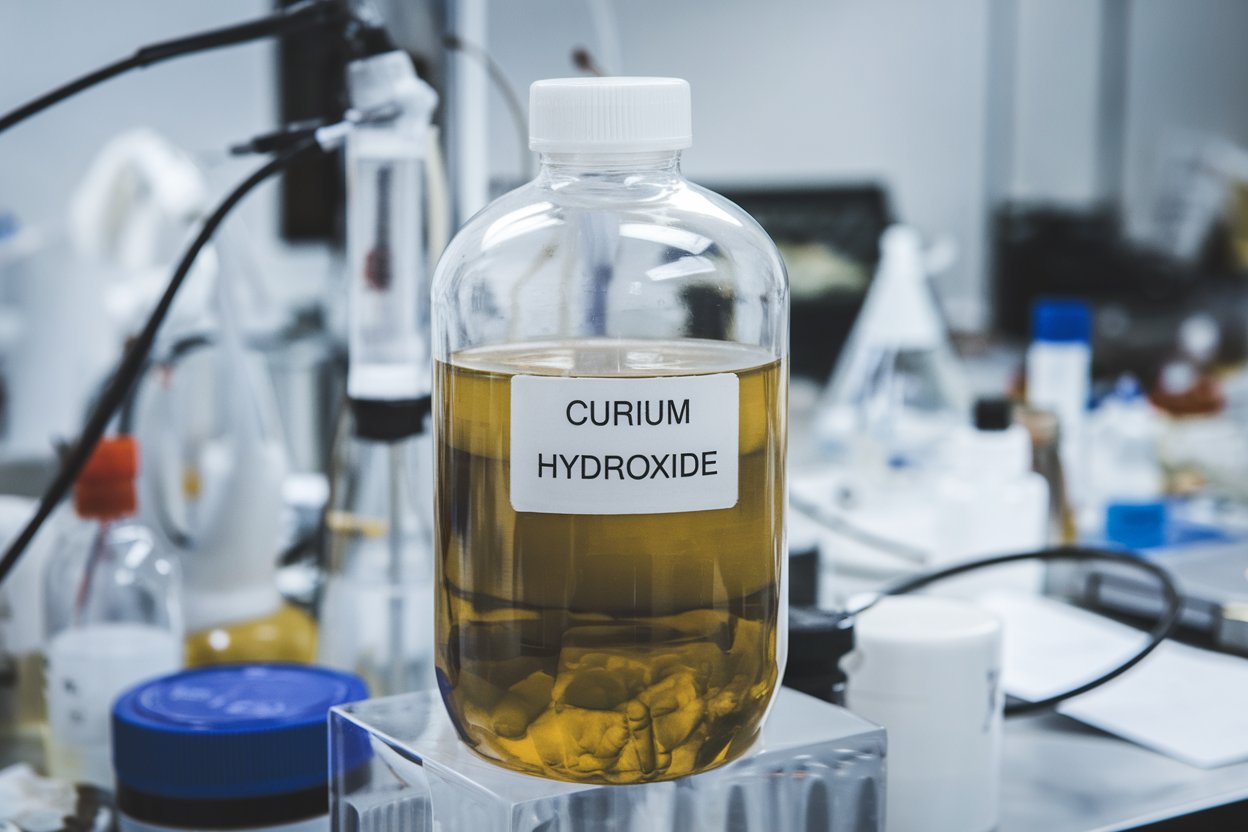
Curium Hydroxide, a compound with the formula Cm(OH)₃, is a fascinating substance with unique properties. Named after Marie and Pierre Curie, this compound is part of the actinide series. Curium itself is a radioactive element discovered in 1944, and its hydroxide form plays a crucial role in scientific research. Why is Curium Hydroxide important? It helps scientists understand the behavior of radioactive materials and their potential applications. From nuclear reactors to medical research, this compound has a wide range of uses. Curious about its properties and applications? Let's dive into 30 intriguing facts about Curium Hydroxide that will expand your knowledge and spark your curiosity.
Key Takeaways:
- Curium Hydroxide, a man-made compound, glows in the dark and has a high melting point. It's used in scientific research and nuclear chemistry experiments, but strict safety measures are essential due to its radioactivity.
- Curium Hydroxide, named after Marie and Pierre Curie, is a valuable tool in advancing scientific knowledge. Despite its dangers, it has potential uses in space exploration as a power source.
What is Curium Hydroxide?
Curium Hydroxide, a compound of curium, is a fascinating substance with unique properties. This article will explore 30 intriguing facts about this compound, shedding light on its characteristics, uses, and more.
Discovery and Basic Properties
Curium Hydroxide has a rich history and distinct properties that make it stand out.
- Curium Hydroxide (Cm(OH)3) is a chemical compound formed by curium and hydroxide ions.
- Curium, the element in Curium Hydroxide, was discovered in 1944 by scientists Albert Ghiorso, Glenn T. Seaborg, and James.
- Named after Marie and Pierre Curie, curium is a synthetic element with the symbol Cm and atomic number 96.
- Curium Hydroxide appears as a white or light-colored solid under normal conditions.
- This compound is highly radioactive, emitting alpha particles during its decay process.
- Curium Hydroxide is insoluble in water, making it a stable compound in aqueous environments.
Production and Synthesis
Creating Curium Hydroxide involves specific processes and conditions.
- Curium Hydroxide is typically produced by reacting curium salts with a strong base like sodium hydroxide.
- The synthesis process requires careful handling due to the radioactivity of curium.
- Curium used in the production of Curium Hydroxide is often obtained from nuclear reactors.
- The compound is usually synthesized in small quantities due to the limited availability of curium.
Applications and Uses
Despite its radioactivity, Curium Hydroxide has several applications.
- Curium Hydroxide is used in scientific research to study the properties of actinides.
- It plays a role in nuclear chemistry experiments, helping scientists understand radioactive decay.
- Curium Hydroxide can be used as a precursor for other curium compounds.
- In some cases, it is utilized in the production of curium-based nuclear fuels.
- The compound's radioactivity makes it useful in radiographic imaging techniques.
Safety and Handling
Handling Curium Hydroxide requires strict safety measures due to its radioactive nature.
- Protective gear, including gloves and lab coats, is essential when working with Curium Hydroxide.
- Facilities handling this compound must have proper ventilation to prevent inhalation of radioactive particles.
- Curium Hydroxide should be stored in lead-lined containers to shield against radiation.
- Regular monitoring of radiation levels is crucial in laboratories dealing with Curium Hydroxide.
- Disposal of Curium Hydroxide must follow strict regulations to avoid environmental contamination.
Environmental Impact
The environmental impact of Curium Hydroxide is a significant concern due to its radioactivity.
- Curium Hydroxide can contaminate soil and water if not handled properly.
- Radioactive decay of Curium Hydroxide can lead to the release of harmful alpha particles.
- Long-term exposure to Curium Hydroxide can pose health risks to humans and wildlife.
- Efforts are made to minimize the environmental footprint of Curium Hydroxide through safe disposal practices.
Interesting Facts
Some lesser-known yet fascinating facts about Curium Hydroxide.
- Curium Hydroxide glows in the dark due to its radioactivity.
- The compound has a relatively high melting point, around 350°C (662°F).
- Curium Hydroxide is not found naturally; it is entirely man-made.
- The element curium, part of Curium Hydroxide, is named in honor of the pioneering scientists Marie and Pierre Curie.
- Curium Hydroxide's radioactivity makes it a potential candidate for use in space exploration as a power source.
- Despite its dangers, Curium Hydroxide continues to be a valuable tool in advancing scientific knowledge.
Final Thoughts on Curium Hydroxide
Curium Hydroxide, a fascinating compound, holds a unique place in the world of chemistry. Its radioactive properties make it both intriguing and challenging to study. Used primarily in scientific research, this compound helps scientists understand more about radioactive elements and their behaviors. Despite its potential hazards, the knowledge gained from studying Curium Hydroxide can lead to advancements in various fields, including nuclear energy and medical treatments.
Handling Curium Hydroxide requires strict safety protocols due to its radioactivity. Researchers must use specialized equipment and follow rigorous procedures to ensure their safety and the safety of others. This compound's rarity and complexity make it a subject of ongoing interest and study.
In summary, Curium Hydroxide is more than just a chemical compound; it's a gateway to deeper scientific understanding and potential technological breakthroughs. Its study continues to push the boundaries of what we know about the atomic world.
Frequently Asked Questions
Was this page helpful?
Our commitment to delivering trustworthy and engaging content is at the heart of what we do. Each fact on our site is contributed by real users like you, bringing a wealth of diverse insights and information. To ensure the highest standards of accuracy and reliability, our dedicated editors meticulously review each submission. This process guarantees that the facts we share are not only fascinating but also credible. Trust in our commitment to quality and authenticity as you explore and learn with us.
